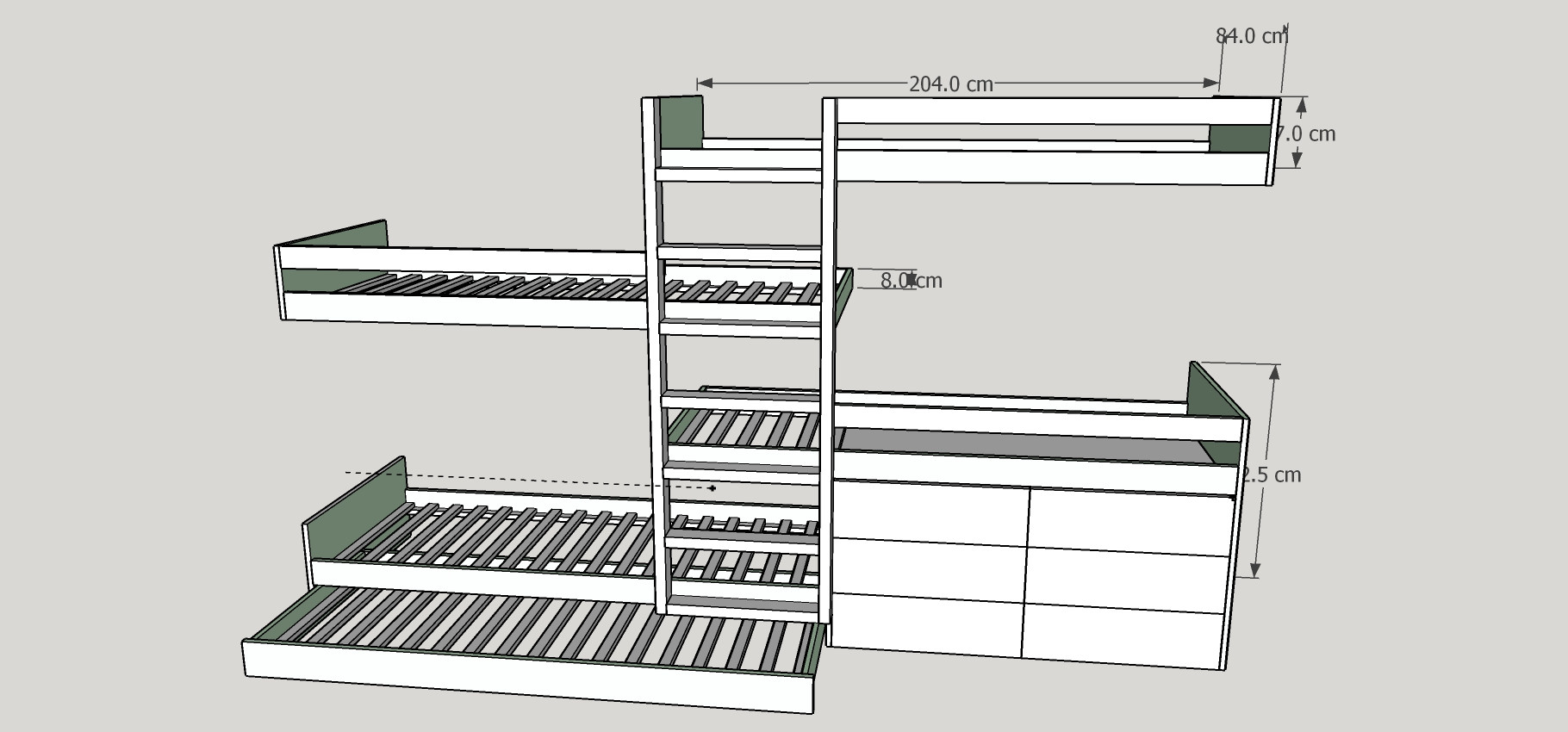I am now wondering if plywood is the best wood choice.
For certain parts of this, very much so (assuming plywood of decent quality).
While I suppose technically every piece of this could be made from solid wood where you want a panel plywood often shines due to not being subject to seasonal movement.
This stability of ply, and other board materials, simplifies various aspects of construction in addition to (esp. in the past) often being much cheaper1 and saving a lot of effort and workshop time — processing boards, glueing them up into panels, further processing to bring the panel to final dimensions and perfecting one or both faces.
On stability:
Take the drawer fronts for example, from plywood they can be made with aesthetically pleasing small gaps all round and there's zero worry that they'll expand during the wetter seasons and bind in their openings.
If the 'boards' at the head of each bed are made from solid wood then expansion and contraction needs to be allowed for; even if it's fairly small it's still something and presents a problem for the other ends of the rails. If made from plywood on the other hand, again no worries about dimensions changing between dry and wet parts of the year so no concerns about the different ways that opposite ends of the rails are fixed to the rest of the structure.
If I have a choice between ply or pine (or some combination?) which one would you recommend and why.
You could definitely use pine for the parts here that would be better made from solid wood and not from ply, but, the dimensions of some pieces need to be considered carefully.
In general if you want relatively narrow pieces, and especially if they're also intended to be thinner, in anything where structural strength is an issue you want a decent hardwood — just look at how chunky softwood furniture often is (and needs to be), compared to the much slimmer elements possible in hardwood furniture.
It's not clear where you intend to source your pine (or 'pine' since the term is often used generically) but note that unless you buy much better than is typical for SPF the wood can often be relatively weak, full of knots, often warped, and perhaps of most importance, it's too damp to use immediately (see a quick primer on buying SPF for anything other than rough carpentry in this previous Answer. See 2 however.
1 But sadly that's not always the case now for good plywood, since prices skyrocketed during the pandemic, there were supply issues then and subsequently, and further supply issues have resulted from the war in Ukraine (making "Baltic birch" unobtainable in many places now, and seen a drop in quality of what is sold under that moniker).
2 It is possible to get decent or actually quite good wood from dimensional softwood (2x material / SPF) but generally only in the larger sizes, x6s up to x12s. Boards of these dimensions tend to be from larger trees and hence a different species to the very fast-growing stuff chosen for 1x2s, 2x4s etc. Note however that a lot of workshop processing is required to produce stock of small dimensions from these large boards.
